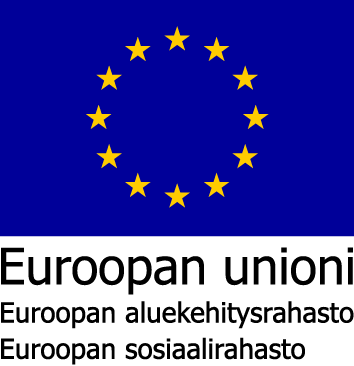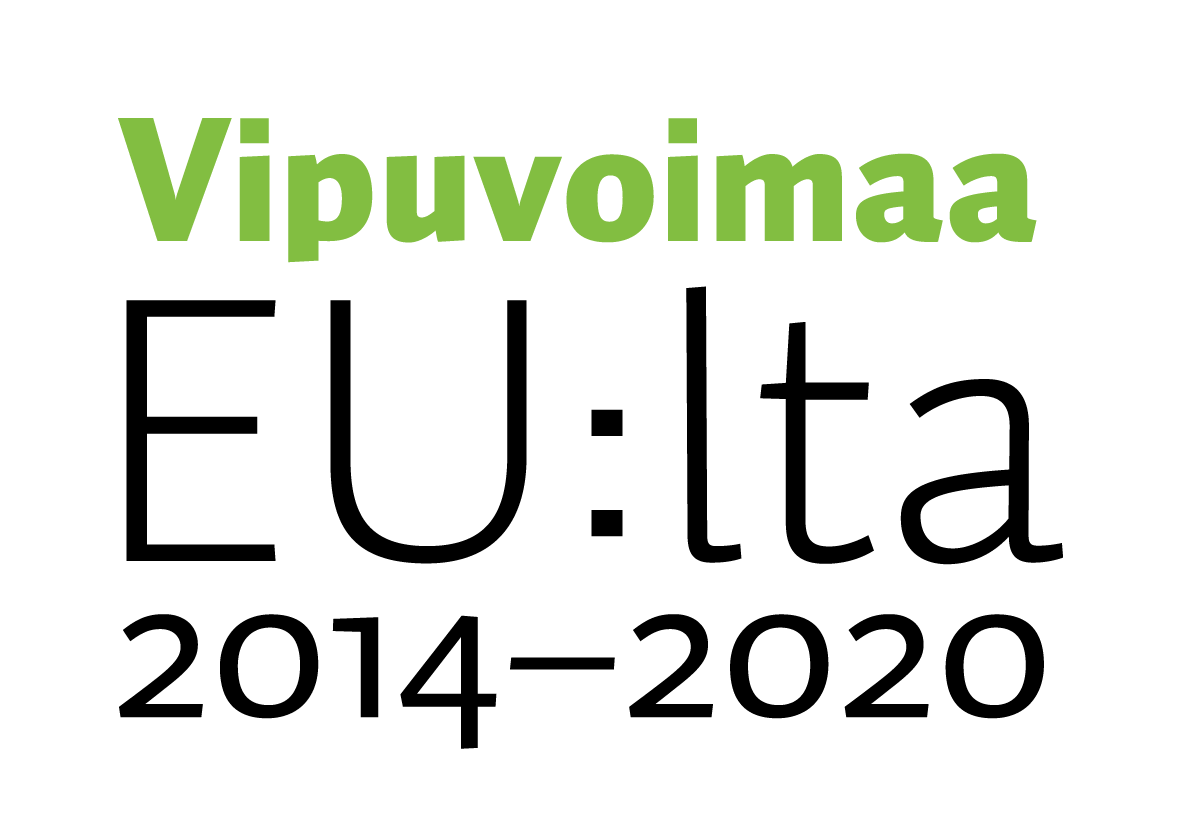

 |
 |
Hankekoodi: S21678
Hankkeen nimi: HYVÄ MINÄ
Toimintalinja: 5. Sosiaalinen osallisuus ja köyhyyden torjunta
Erityistavoite: 10.1. Työelämän ulkopuolella olevien työ- ja toimintakyvyn parantaminen
Suunnitelman mukainen toteutusaika: Alkaa 1.6.2019 ja päättyy 28.2.2022
Toiminnan tila: Toiminta päättynyt
Vastuuviranomainen: Hämeen elinkeino-, liikenne- ja ympäristökeskus
Hakijan virallinen nimi: Lasten Liikunnan Tuki ry.
Organisaatiotyyppi: Kansalaisjärjestö
Y-tunnus: 1052364-9
Jakeluosoite: Mattilantie 14
Puhelinnumero: 0400-744886
Postinumero: 13100
Postitoimipaikka: Hämeenlinna
WWW-osoite: http://www.lastenliikunnantuki.fi
Hankkeen yhteyshenkilön nimi: Anu Saarinen
Yhteyshenkilön asema hakijaorganisaatiossa: Projektikoordinaattori
Yhteyshenkilön sähköpostisoite: anu.saarinen(at)lastenliikunnantuki.fi
Yhteyshenkilön puhelinnumero: 0409052908
Hakijoiden lukumäärä tai tuen siirto -menettely:
Liikunta ja ravinto ovat keskeisiä ihmisten hyvinvoinnin lähteitä. Liikunnalla ja ravinnolla voidaan tukea ihmisten hyvinvointia, vastuunottoa ja voimaantumista. Niillä on tutkitusti myönteisiä terveysvaikutuksia niin fyysisesti kuin psyykkisestikin. Niiden avulla voidaan lisätä sosiaalista osallisuutta ja sosiaalisuhteita, vahvistetaan omia voimavaroja sekä omaehtoista toimintaa. Nämä ovat tärkeitä osa-alueita tavoiteltaessa työelämän ulkopuolella olevien työ- ja toimintakyvyn parantumista.
HYVÄ MINÄ -hankkeen tavoitteena on työelämän ulkopuolella olevien työ- ja toimintakyvyn parantumisen lisäksi, koetun hyvinvoinnin ja elämänlaadun lisääminen, syrjäytymisen ehkäisy, vastuunoton edellytysten parantaminen sekä voimaantumisen lisääntyminen. Tavoitteena on lisätä sosiaalista osallisuutta, tasa-arvoa ja yhdenvertaisuutta erityisesti niissä kohderyhmissä, joiden sosiaalinen osallisuus on uhatuin. Tavoitteena on lisätä omaehtoisuutta sekä harjaannuttaa vastuunottoa itsestään ja omasta arjestaan.
Lisäksi tavoitteena on monipuolistaa asiakaslähtöisiä toimintatapoja, palveluita ja ohjausta, sekä tukea rajapintapalveluita uudenlaisten ohjaavien, aktivoivien ja hyvinvointia lisäävien palveluiden yhdistelmillä ja kokonaisuuksilla. Hankkeen on mahdollista esitellä myös yksilöllisiä, joustavia ja matalan kynnyksen mahdollisuuksia lähestyä koulutusta ja työelämää esim. osaamisen tunnistamisen, opinnollistamisen, opintopisteiden avulla.
Hankkeen toteutuksessa Etelä-Hämeen Marttojen ja Lasten Liikunnan Tuen yhteistyö mahdollistaa monipuolisen ja moniammatillisen palvelukokonaisuuden. Eri elämän ja hyvinvoinnin osa-alueiden yhdistelmä tukee parhaalla mahdollisella tavalla kohderyhmää. Hankkeen on mahdollista tarjota sekä yksilö- että pienryhmäohjausta ja tukea vastuunoton kehittymistä hyödyntäen ohjauksessa liikuntaa sekä kotitaloustaitojen harjoittelua. Yhteistyöntoimintamalli tuo lisäarvoa ja uudenlaisia ratkaisuja olemassa oleviin työ- ja toimintakykyä sekä hyvinvointia lisääviin palveluihin sekä vahvistaa kolmannen sektorin roolia syrjäytymisen ehkäisyssä ja hyvinvointia ylläpitävissä palveluissa. Hankkeen toiminta edistää monialaisten palveluiden hyödyntämistä koordinoidusti ja lisää eri toimijoiden välistä yhteistyötä: kolmannen sektorin toimijoiden välistä yhteistyötä sekä kolmannen sektorin ja julkisen sektorin välistä yhteistyötä. Palveluorganisaatioiden yhteistyö lisääntyy ja syntyy monipuolisempia palveluprosesseja.
Hankekokonaisuus koostuu seuraavista toimintakokonaisuuksista:
1. Hyvä minä -liikunta
Liikunta ohjauksen välineenä pyrkii koetun henkilökohtaisen hyvinvoinnin ja sosiaalisen osallisuuden lisäämisen sekä työ- ja toimintakyvyn paranemisen lisäksi harjoittamaan osallistujien vastuunottamisen taitoja
2. Hyvä minä -ruoanvalmistuskurssit
Ryhmätoimintana toteutettava kotitalousneuvonta tarjoaa ruoan valmistuskursseilla ohjausta miten valmistetaan edullista, terveellistä ja sesongin mukaista kotiruokaa.
3. Liikkumiseen ja terveellisempiin valintoihin kannustavat pop up -tapahtumat matalan kynnyksen paikoissa
Lasten Liikunnan Tuki ja Etelä-Hämeen Martat yhteistyössä eri sidosryhmien kanssa osallistuvat erilaisiin matalankynnyksen tapahtumiin ja ovat tavoitettavissa kohtaamispaikoilla. Tavoitteena tavoittaa kohderyhmää sekä kertoa hankkeen toiminnan lisäksi terveellisten elämäntapojen merkityksestä hyvinvoinnille sekä antamaa helppoja vinkkejä ja innostaa omatoimiseen aktiivisuuteen.
Hankkeen tuloksena kohderyhmän koettu hyvinvointi, elämänhallinta ja -laatu sekä toimintakyky ja sosiaalista osallisuus kohoavat. Hankkeen toimenpitein vahvistetaan henkilökohtaisia voimavaroja, yhteisöllisyyttä sekä ennaltaehkäistään syrjäytymistä. Palveluorganisaatioiden yhteistyö lisääntyy ja syntyy monipuolisempia palveluprosesseja.
Hankkeen varsinainen kohderyhmä ovat työelämän ulkopuolella olevat (mm. pitkäaikaistyöttömät, maahanmuuttajat, nuoret, ikääntyneet). Erityisesti huomioidaan ne ryhmät, joiden hyvinvointi ja sosiaalinen osallisuus on uhatuin. (vähintään 50 henkeä)
Hankkeen välillistä kohderyhmää ovat työ- ja palveluorganisaatiot, joiden yhteistyötä ja palveluprosesseja pyritään monipuolistamaan sekä henkilöstön osaamista lisäämään. Tällaisia organisaatioita ovat mm. kuntouttavan työtoiminnan yksiköt, aikuisten ja nuorten työpajat, sosiaalipalvelut, työvoimahallinto, lähiökeskukset, ohjaamo, Kumppanuustalo.
Myönnetty EU- ja valtion rahoitus: 211 890
Toteutunut EU- ja valtion rahoitus: 192 151
Suunniteltu julkinen rahoitus yhteensä: 234 140
Toteutunut julkinen rahoitus yhteensä: 214 401
Maakunnat: Kanta-Häme
Seutukunnat: Hämeenlinnan
Kunnat: Hämeenlinna, Janakkala
Jakeluosoite:
Postinumero:
Postitoimipaikka:
Suunniteltu: 0
Toteutunut seurantatietojen mukaan: 0
Suunniteltu: 50
| Välitön | Välillinen | |
| Ekologinen kestävyys | ||
| Luonnonvarojen käytön kestävyys | 0 | 0 |
| Hankkeen toiminnalla ei ole oleellista merkitystä ekologiseen kestävyyteen. | ||
| Ilmastonmuutoksen aiheuttamien riskien vähentäminen | 0 | 0 |
| Hankkeen toiminnalla ei ole oleellista merkitystä ekologiseen kestävyyteen. | ||
| Kasvillisuus, eliöt ja luonnon monimuotoisuus | 0 | 0 |
| Hankkeen toiminnalla ei ole oleellista merkitystä ekologiseen kestävyyteen. | ||
| Pinta- ja pohjavedet, maaperä sekä ilma (ja kasvihuonekaasujen väheneminen) | 0 | 0 |
| Hankkeen toiminnalla ei ole oleellista merkitystä ekologiseen kestävyyteen. | ||
| Natura 2000 -ohjelman kohteet | 0 | 0 |
| Hankkeen toiminnalla ei ole oleellista merkitystä ekologiseen kestävyyteen. | ||
| Taloudellinen kestävyys | ||
| Materiaalit ja jätteet | 0 | 0 |
| Hankkeen toiminnalla ei ole oleellista merkitystä taloudelliseen kestävyyteen. | ||
| Uusiutuvien energialähteiden käyttö | 0 | 0 |
| Hankkeen toiminnalla ei ole oleellista merkitystä taloudelliseen kestävyyteen. | ||
| Paikallisen elinkeinorakenteen kestävä kehittäminen | 0 | 0 |
| Hankkeen toiminnalla ei ole oleellista merkitystä taloudelliseen kestävyyteen. | ||
| Aineettomien tuotteiden ja palvelujen kehittäminen | 0 | 0 |
| Hankkeen toiminnalla ei ole oleellista merkitystä taloudelliseen kestävyyteen. | ||
| Liikkuminen ja logistiikka | 0 | 0 |
| Hankkeen toiminnalla ei ole oleellista merkitystä taloudelliseen kestävyyteen. | ||
| Sosiaalinen ja kulttuurinen kestävyys sekä yhdenvertaisuus | ||
| Hyvinvoinnin edistäminen | 7 | 7 |
| Hankkeen toimenpiteet lisäävät välittömästi kohderyhmän hyvinvointia (liikunta, terveelliset elämäntavat) ja elämänhallintaa sekä sosiaalista kanssakäymistä. Liikunnan hyvinvointivaikutukset lisäävät yleistä hyvinvointia, lisäävät lisäksi osallisuutta ja toiminta- ja harrastemahdollisuuksia.Hyvinvoinnin lisääminen on myös yksi EUn Itämeren alueen strategian tavoitteista (vaurauden ja hyvinvoinnin lisääminen). | ||
| Tasa-arvon edistäminen | 5 | 5 |
| Hankkeen toimenpiteet tukevat tasa-arvoa huomioimalla yksilölliset tarpeet ja mahdollistamalla henkilökohtaiset toteutussuunnitelmat vastaamaan kunkin tarpeita. Yhdenvertaisuus on tärkeä teema hankkeen toimenpiteissä. | ||
| Yhteiskunnallinen ja kulttuurinen yhdenvertaisuus | 5 | 5 |
| Toimenpiteillä vahvistetaan kohderyhmän hyvinvointia ja elämänhallinnan edellytyksiä riippumatta yhteiskunnallisesta tai sosiaalisesta taustasta. Yhdenvertaisuus toteutuu hakijan perustoiminnassa. | ||
| Kulttuuriympäristö | 2 | 3 |
| Toimintaympäristöinä osittain toimivat alueet kuuluvat merkittäviin luonto- ja kulttuuriympäristöihin.Toimenpiteiden yhteydessä pyritään säilyttämään ja vahvistamaan niiden kulttuuriperintöä, maisemaa, virkistyskäyttöarvoa tuomalla nämä asiat osallistujien tietouteen. | ||
| Ympäristöosaaminen | 2 | 3 |
| Ympäristöosaaminen ja ympäristötietoisuus lisääntyvät hankkeen toimenpiteiden välityksellä, liikutaan luontoalueilla niiden luontoarvoja ja monimuotoisuutta kunnioittaen, kotitalousneuvonnassa kierrätys, lähiruoka ja ympäristöosaaminen tulevat osallistujille tutuiksi. | ||
Työelämän ulkopuolella olevien työ- ja toimintakyvyn parantaminen ja syrjäytymisen ehkäisy ovat suuria yhteiskunnallisia haasteita. Toisaalta ohjausresurssien riittävyys on haaste kaikilla sektoreilla. Tarvitaan lisää sosiaalista osallisuutta ja omaehtoisuutta lisääviä sekä syrjäytymistä ehkäiseviä asiakaslähtöisiä palveluita ja ohjausta sekä uudenlaisia ohjaavien, aktivoivien ja hyvinvointia lisäävien palveluiden yhdistelmiä ja kokonaisuuksia.
Liikunta ja ravinto ovat keskeisiä ihmisten hyvinvoinnin lähteitä. Liikunnalla ja ravinnolla voidaan tukea ihmisten hyvinvointia, vastuunottoa ja voimaantumista. Näistä lähtökohdista hankkeen toimenpiteet liittyen ravintoon ja liikuntaan olivat erityisen perusteltuja. Ravinnon ja liikunnan vaikutus kokonaisvaltaiseen hyvinvointiin on merkittävä. Hanke tarjosi merkittävän lisäresurssin asiakasryhmän ohjaukseen arjen aktivoinnin, syrjäytymisen ehkäisyn, sosiaalisen osallisuuden sekä työ- ja toimintakyvyn lisäämisen näkökulmasta. Hanketoimijoiden yhteistyö ja toimijaverkosto mahdollisti laajan ja kokonaisvaltaisen asiakasryhmän hyvinvoinnin kehittämisen ja haasteisiin vastaamisen.
Hankkeen toiminta-aika ajoittui aikaan, jolloin Covid -19 pandemia rajoituksineen haastoi kaikkea toimintaa ja asiakkaiden osallistumista ohjattuun-/ryhmätoimintaan. Tämä haastoi myös toteuttajat miettimään ja ideoimaan vaihtoehtoisia tapoja toteutukselle. Kohderyhmälle ajanjakso oli kuitenkin erityisen haastava tilanteessa, jossa valmiudet ja resurssit selviytyä poikkeusajasta olivat jo lähtökohtaisesti usein haastavat.
Hankkeen toimintaan osallistuneet ovat kokeneet työ- ja toimintakykynsä parantuneen sekä hyvinvoinnin ja elämänlaadun lisääntyneen.
Kirjallisesti ja suullisesti kerätyn palautteen perusteella hankkeesta on saatu arjen ympärille toimintaa, joka tukee hyvinvointia. Ruokakurssi ja viikoittainen liikunta koettiin myös hyväksi virikkeeksi kotoa lähtemiseen. Ruokakurssin aikana on saatu kokea uusia ruokatottumuksia. Ruokarytmin koettiin parantuneen, joka on yksi osa hyvinvoinnin lisääntymistä. Liikunnassa on tutustuttu ja kokeiltu uusia lajeja. Toiminta koettiin hyväksi hyvän ruoan ja seuran takia ja on opittu toimimaan ryhmässä. Ruokakurssilla opittiin enemmän kasvisten ja kalan käyttöä ja sitä on lisätty ruokavalioon, joka tutkitusti tukee ihmisen hyvinvointia. Lisäksi palautteiden perusteella osallistujat ovat ymmärtäneet, että liikunnalla on hyvinvointivaikutuksia ja terveellinen ruoka voi olla hyvää ja että sitä kannattaa valmistaa itse. Ryhmähenki on koettu mukavaksi ja iloiseksi.
Asiakkaiden kokema yhdenvertaisuus ja tasa-arvoisuuden tunne sekä osallisuus ovat lisääntyneet. ja osallistujat ovat olleet samanarvoisia.
Osallistujien omaehtoisuus ja vastuunotto omasta arjesta on lisääntynyt.
Vastuunotto omasta arjesta on lisääntynyt. Vaikka liikkeelle lähteminen on koettu vaikeaksi, niin toimintaan tuleminen on koettu sen verran tärkeäksi, että on päästy paikalle. Yhdessä tekeminen ja muiden ihmisten seura on koettu piristäväksi ja päivä onkin saanut paremman suunnan, kuin jos olisi jäänyt kotiin neljän seinän sisälle.
Asiakaslähtöisiä toimintatapoja, palveluita ja ohjausta on lisätty ja rajapintapalveluita uudenlaisten ohjaavien, aktivoivien ja hyvinvointia lisäävien palveluiden yhdistelmillä ja kokonaisuuksilla tuettu.
Kaikki eivät uskalla tulla ryhmätapaamisiin ja varsinkin jos kokemus ruoanlaitto- tai liikuntataidoista on heikot. Siihen on tarjottu mahdollisuutta yksilöohjaukseen. Tämä on hyvä tapa myös silloin, jos ohjausta tarvitaan paljon. Ryhmätapaamisissa ei ole aina aikaa tai mahdollisuutta perehtyä yksittäisiin tarpeisiin.
Kotitaloustaitojen ja liikunnan ohessa vahvistuvat myös sosiaaliset valmiudet ja ryhmässä työskentelyn taidot. Toiminta tarjoaa tärkeitä onnistumisen kokemuksia ja elämyksiä, oman arjen hallintaa helpottavia taitoja sekä terveellisiin elämäntapoihin liittyvää osaamista.
Ryhmissä on tapahtunut jonkin verran vaihtuvuutta ja tämä on osalle osallistujista saattanut olla haastavaa. Sosiaaliset tilanteet ja vuorovaikutus ovat usein haastavia mutta ryhmähenki on pysynyt hyvänä asiakkaat ovat saaneet onnistumisen kokemuksia.
Hankkeen aikana järjestettiin ruokaryhmiä Etelä-Hämeen Marttojen opetuskeittiöllä ja liikuntatoimintaa Hämeenlinnan uimahallin liikuntasalissa. Osallistujat kävivät myös retkellä ja kokkailivat ja nauttivat retkieväitä. Kaikki ryhmäläiset eivät osallistuneet ulkotapaamisiin. Syynä saattoi olla se, että tapaamiset järjestettiin kauempana kuin Marttojen toimisto, bussirahat tiukalla ja vaikeuksia päästä paikalle. Liikunnassa tutustuttiin myös lähiliikuntapaikkoihin.
Asiakaslähtöiset toimintatavat, palvelut ja ohjausta ovat monipuolistuneet. Rajapintapalveluita on tuettu uudenlaisten ohjaavien, aktivoivien ja hyvinvointia lisäävien palveluiden yhdistelmillä ja kokonaisuuksilla, joissa huomioidaan ihmisten kokonaisvaltainen hyvinvointi sekä arjen mahdollisesti kasaantuneet haasteet. Hankkeen toiminnan tuloksena asiakasryhmälle on voitu tarjota yksilöllisiä ja joustavia palveluita ja tukea yksilöllisellä polulla kohti parempaa hyvinvointia.
Eri elämän ja hyvinvoinnin osa-alueiden yhdistelmä tukee parhaalla mahdollisella tavalla kohderyhmän toimintakykyä sekä voimaantumista. Osallisuutta tukeva, toiminnallisiin ohjausmenetelmiin perustuva työote huomioi osallistujien erilaiset valmiudet. Toiminta on tarjonnut tärkeitä onnistumisen kokemuksia ja elämyksiä, oman arjen hallintaa helpottavia taitoja sekä terveellisiin elämäntapoihin liittyvää osaamista.
Hankkeen toiminta on tuonut lisäarvoa ja uudenlaisia ratkaisuja olemassa oleviin työ- ja toimintakykyä sekä hyvinvointia lisääviin palveluihin sekä vahvistaa kolmannen sektorin roolia syrjäytymisen ehkäisyssä ja hyvinvointia ylläpitävissä palveluissa. Hankkeen toiminta on edistänyt monialaisten palveluiden hyödyntämistä ja lisännyt eri toimijoiden välistä yhteistyötä. Myös kolmannen sektorin toimijoiden välinen yhteistyöjulkisen sektorin kanssa on tiivistynyt.
Hankkeen kokemuksia hyödynnetään ja edelleen kehitetään hankkeen päättymisen jälkeen asiakkaille tarjottavissa palveluissa. Toteuttajaorganisaatioiden yhteistyö jatkuu myös hankkeen päätyttyä. Organisaatioiden kehittämistyössä hyödynnetään hankkeen esiin nostamia kehittämistarpeita ja niihin pyritään vastaamaan jatkotoimenpiteillä.
Hanketta toteutettiin Hämeenlinnan ja Janakkalan kuntien alueella. Tavoitteena oli saada hankkeen toimenpiteisiin osallistumaan viisikymmentä kohderyhmän edustajaa. Virallisten aloitusilmoitusten perusteella osallistujia oli 72. Näiden lisäksi toimenpiteissä oli mukana useita kymmeniä, jotka eri syistä eivät halunneet antaa itsestään tarvittavia tietoja. Osallistujista naisia oli 39 ja miehiä 33. Nuorissa (yht. 35) miesten osuus oli suurempi (24) ja yli kolmekymmentävuotiaissa (yht. 37) puolestaan naisten (28). Ruokakurssikertoja toteutui 69 ja liikuntakertoja toteutui lähiohjauksessa 310. Tämän lisäksi rajoituksista johtuen osa ohjauksesta ja aktivoinnista tapahtui sosiaalisen median kanavissa.
Rajoitukset haastoivat myös suunnittelemaan vaihtoehtoisia ohjausmenetelmiä kuten etäohjausta ja videoiden välityksellä toteutettua toimintaa. Eniten korona -aika vaikutti kuitenkin suunniteltujen Pop up -tapahtumien toteutukseen. Tavoitteena olleista noin kahdestakymmenestä tilaisuudesta toteutui ainoastaan neljätoista (14). Pop Up tapahtumien tavoitteena oli markkinoida olemassa olevia ryhmiä, kertoa toiminnasta ja löytää kohderyhmää, jotta saataisiin lisää osallistujia. Jokaisessa tapahtumassa oli oma teema, joka sopi tapahtumaan tai tilaisuuteen.